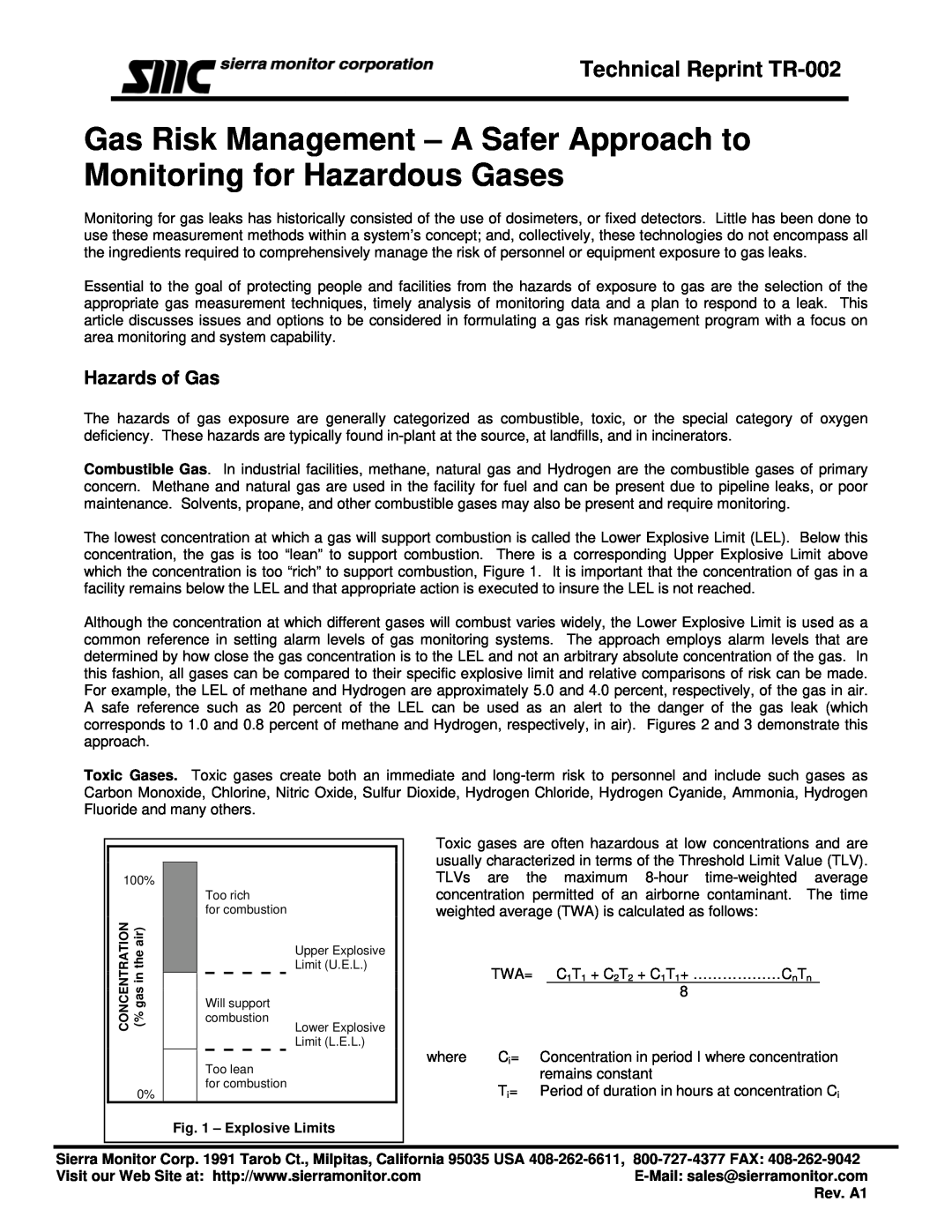
Technical Reprint TR-002
Gas Risk Management – A Safer Approach to Monitoring for Hazardous Gases
Monitoring for gas leaks has historically consisted of the use of dosimeters, or fixed detectors. Little has been done to use these measurement methods within a system’s concept; and, collectively, these technologies do not encompass all the ingredients required to comprehensively manage the risk of personnel or equipment exposure to gas leaks.
Essential to the goal of protecting people and facilities from the hazards of exposure to gas are the selection of the appropriate gas measurement techniques, timely analysis of monitoring data and a plan to respond to a leak. This article discusses issues and options to be considered in formulating a gas risk management program with a focus on area monitoring and system capability.
Hazards of Gas
The hazards of gas exposure are generally categorized as combustible, toxic, or the special category of oxygen deficiency. These hazards are typically found
Combustible Gas. In industrial facilities, methane, natural gas and Hydrogen are the combustible gases of primary concern. Methane and natural gas are used in the facility for fuel and can be present due to pipeline leaks, or poor maintenance. Solvents, propane, and other combustible gases may also be present and require monitoring.
The lowest concentration at which a gas will support combustion is called the Lower Explosive Limit (LEL). Below this concentration, the gas is too “lean” to support combustion. There is a corresponding Upper Explosive Limit above which the concentration is too “rich” to support combustion, Figure 1. It is important that the concentration of gas in a facility remains below the LEL and that appropriate action is executed to insure the LEL is not reached.
Although the concentration at which different gases will combust varies widely, the Lower Explosive Limit is used as a common reference in setting alarm levels of gas monitoring systems. The approach employs alarm levels that are determined by how close the gas concentration is to the LEL and not an arbitrary absolute concentration of the gas. In this fashion, all gases can be compared to their specific explosive limit and relative comparisons of risk can be made. For example, the LEL of methane and Hydrogen are approximately 5.0 and 4.0 percent, respectively, of the gas in air. A safe reference such as 20 percent of the LEL can be used as an alert to the danger of the gas leak (which corresponds to 1.0 and 0.8 percent of methane and Hydrogen, respectively, in air). Figures 2 and 3 demonstrate this approach.
Toxic Gases. Toxic gases create both an immediate and
|
|
|
|
|
|
| 100% |
| Too rich |
|
|
|
|
|
| ||
|
|
|
|
| |
|
|
| for combustion |
|
|
| CONCENTRATION (% gas in the air) |
|
| Upper Explosive |
|
|
|
| Limit (U.E.L.) |
| |
|
| Will support |
|
| |
|
| combustion | Lower Explosive |
| |
|
|
|
| ||
|
|
|
| Limit (L.E.L.) |
|
|
|
| Too lean |
|
|
| 0% |
| for combustion |
|
|
|
|
|
|
| |
|
| Fig. 1 – Explosive Limits | |||
|
|
|
|
|
|
Toxic gases are often hazardous at low concentrations and are usually characterized in terms of the Threshold Limit Value (TLV). TLVs are the maximum
| TWA= |
| C1T1 + C2T2 + C1T1+ ………………CnTn | |
|
|
| 8 |
|
where | Ci= | Concentration in period I where concentration | ||
| Ti= | remains constant | ||
| Period of duration in hours at concentration Ci | |||
Sierra Monitor Corp. 1991 Tarob Ct., Milpitas, California 95035 USA
Visit our Web Site at: http://www.sierramonitor.comE-Mail: sales@sierramonitor.com Rev. A1
